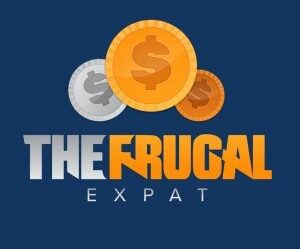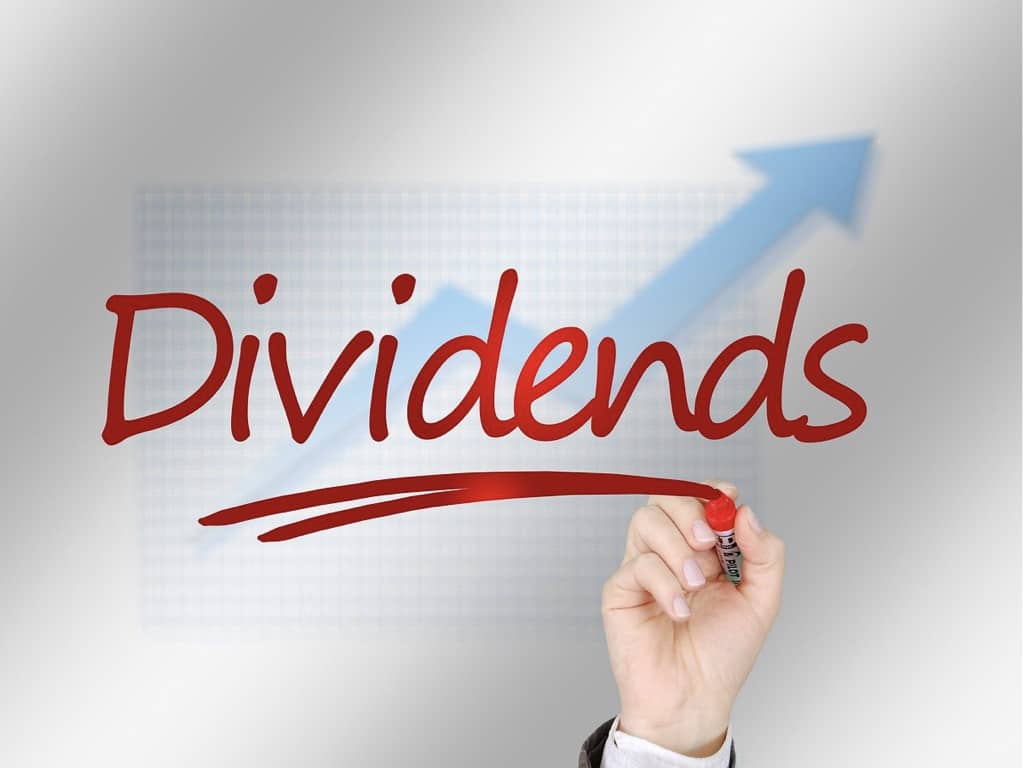Whether you are just starting to invest or have been investing for decades, dividends can be a valuable part of anyone's investing portfolio. However, you'll typically see dividends associated with those getting closer to retirement who are not looking for as much growth in their investments but are more so looking to supplement their income.
As with any part of investing, you should first understand what it is you're investing in. Although Reddit can provide an abundance of personal finance information, we'll focus on investing in anything that pays out dividends.
Below is a guide to help you get started.
What is a Dividend?
Let's first define what exactly a dividend is. Generally speaking, a dividend is a distribution of a portion of a company's earnings paid to the shareholders.
Dividends can provide income and growth for long-term investments. In addition, many times, there will be options to reinvest dividends back into the same company automatically.
Dividend Example
Let's use a basic example of how a dividend might work. Company X has a share price of $100, and you own 100 shares. Company X announces they will pay a $1.50 dividend per share on the next payment date (companies announce dividend amounts several weeks before the payment).
On the payment day, you'll receive $150 worth of dividends. After that, however, the stock price will likely drop the same $1.50 as the company is technically worth that much less after paying its shareholders that amount per share.
Why Companies Pay Dividends
So why would a company want to pay out some of its profits? The simple answer is to attract more investors.
Many companies that payout dividends are well-established and stable companies. By paying a dividend, they attract investors creating more demand for their stock.
Often, paying a dividend can be seen as a sign of power and strength within a company, making their stock more attractive to investors.
Another reason dividends are attractive to investors is to generate passive income. Many times, retirees are looking to create more income for themselves. They don't require the growth factor as younger investors, so they turn to investments to pay dividends to earn money during their retirement.
Why Companies Don't Pay Dividends
Many companies won't pay dividends for several reasons, the biggest being it hurts their bottom line. That is much less cash the company has and is therefore much less valuable when paying out dividends. Usually, companies just starting up, like a new online business, are more mindful of their cash flow.
For one, having less cash means less money to pay employees, fix buildings, or grow the business in countless other ways. In addition, because the company's value is less, the stock price will typically drop when a company pays dividends, deterring smaller, less established companies from doing so.
Others will argue that dividend payments don't attract retired investors as many would instead invest in bonds due to the fluctuation dividends may have.
On the other hand, bonds have a fixed return rate, which can be more attractive since investors don't need to guess what their income may be as with dividends.
How Do You Earn A Dividend?
Earning a dividend is an easy feat to accomplish. The company will automatically pay to your brokerage account at distribution time by buying a stock or mutual fund that pays out dividends.
The other factor to consider is the ex-dividend date when the company declares its dividend for that period.
The payment date typically comes later. The seller will get the dividend if you buy the stock after the ex-dividend date but before the payment date. Once the next payment date arrives, you'll receive your dividends.
Four Companies That Pay Dividends
As mentioned earlier, many of the companies that pay out dividends are long-standing, well-established companies. As a result, they will pay out dividends to continually attract investors, further pushing their stock price. Below are examples of four such companies.
Walmart
Walmart certainly doesn't have the highest dividend payout, with about a 1.5% dividend yield for one of the world's largest companies. But, again, one of the reasons people invest in Walmart is its staggering size, and the dividends tend to be a bonus.
Another factor many dividend investors will look at is consecutive dividend increases. Walmart is currently on a streak of 46 years of successive increases, giving investors something else to look forward to.
Exxon Mobil
Despite the lessening dependence on oil, Exxon Mobil is still one of the largest energy companies in the world. Another powerhouse company that can afford to reward faithful investors with a 6.7% dividend yield. Exxon also has quite the streak of consecutive increases, currently sitting at 37 years and counting.
PepsiCo
Another company that has had to shake up its product line to remain strong is PepsiCo. Few of us buy soda, but PepsiCo owns a snack line, Aquafina, and even sports drink Propel Water. By staying as strong as they are, Pepsi has been able to pay out a 2.9% dividend yield and has a strong streak of 48 years of annual dividend increases.
Procter and Gamble
Procter and Gamble is a goliath in the retail world, owning brands that stretch from laundry detergent, paper towels, and toilet paper to razors, soaps, and shampoos.
The company isn't going under any time soon. Its strength makes it what many investors call a “defensive stock,” meaning consumers will still purchase products during a recession as they are more of a necessity than a luxury.
With a reasonable dividend yield of 2.5% and a staggering 64-year streak of annual increases, it can also be considered a strong dividend stock.
When Do Companies Payout
In most cases, companies pay dividends four times a year every quarter. However, companies can decide to pay out dividends at different intervals if they like. Monthly or yearly dividends are two other less common options.
Dividend Tax Benefits
Dividends can have tax benefits for both the shareholders and the company giving them out. For the company, by giving part of their profits to shareholders, they won't be taxed on that money, therefore paying less in taxes.
For shareholders, there can also be a tax break. When the company pays the dividends and the shareholder meets specific requirements, the dividends can be considered Qualified Dividends.
When the government deems dividends to be qualified, they will tax at a lower rate. The exact tax rate varies depending on your income tax bracket, but the tax on qualified dividends is always less. Those in lower tax brackets might not pay any taxes at all on qualified dividends.
If you're looking for more tax advantages while investing, check out these ten best Vanguard Index Funds.
Other Important Terminology
DRIP
As noted earlier, some companies and mutual funds will allow shareholders to reinvest their dividends. This reinvestment is commonly known as a DRIP (Dividend ReInvestment Plan).
Dividend Yield
In mathematical terms, you can calculate a company's dividend yield by taking the amount of dividend paid per share, divide that by the stock's market price per share and then multiply by 100, follow that?
In layman's terms, the dividend yield is a measurement showing how much of its profits and company pays out in dividends. Thus, when judging dividend stocks, many investors will compare the company's dividend yield to the industry average.
Ordinary Dividends
Earlier, we spoke about qualified dividends and how they could give investors a tax benefit. When dividends don't qualify, they are known as ordinary dividends. These dividends are taxed at the same rate as your income bracket.
Special Dividends
Now and again, a company might find itself flush with cash. When that happens, it can choose to pay out a special dividend, a one-time dividend payout that is typically higher than its regular dividend.
Dividend Payout Ratio
Many people will confuse the dividend yield and dividend payout ratio as they have very similar calculations. The definition of the payout ratio is how much of a company's net earnings they pay out as dividends. Mainly the dividend payout ratio is used to determine how sustainable a company's dividend payout program is.
A Few Words Of Warning
Dividends seem like a great way of investing, and they are, but they shouldn't be your only way. There are many reasons to invest in dividend-paying stocks, but you should do it with caution.
Remember, even though the income could qualify for lower taxation, sometimes they don't. Two, you will get taxed on dividends regardless, which could surprise you come tax season.
Getting taxed could become especially painful if you reinvest your dividends. In that case, you won't have the income in your bank account and essentially pay a fee at tax time.
You should also be careful when using dividends as a source of income. As noted earlier, dividend payouts can fluctuate from period to period. Companies can even vote to stop paying them altogether, leaving you with no income from that stock.
You won't see the same amount of growth from stocks that pay dividends when compared to those that don't, so if you are looking to make more significant gains, non-dividend paying stocks may be a better option for you.
Four Dividend Investing Tips
Find Companies With Strong Track Records
When it comes to dividend investing, find companies with solid track records, meaning they are well established and have high market values. Small companies don't typically pay dividends. If you find one that recently started, they might not be ready to pay anything substantial yet.
Find Sustainable Dividends
Remember that payout ratio mentioned earlier? Make sure you find a company that has a payout ratio in the 30% – 50% range as anything higher could be unsustainable, and anything lower means the company is more focused on growth than paying out dividends.
Annual Increase Streaks
The four dividend stocks noted earlier that they all have a long streak of annual dividend increases. So, yes, you might find stocks with higher yields, but that doesn't mean anything if that company can't sustain those yields or raise its dividends year over year. Investing is a long-term game, and dividend investing is no different.
Always Reinvest Dividends
Speaking of long-term investing, the best way to gain the most growth from your dividend investing over the long term is to participate in the DRIP consistently.
Each time you reinvest your dividends, you're buying just a bit more stock than the time before. So earning you more in dividends allows you to buy more stock, you see where this is going? Always reinvest.
Final Takeaways
Many people will think of dividends as easy passive income or retirement income, but there is much more to them than that. Investing in dividend stocks will have implications on your taxes now and your income down the road.
The rule for any investor should be to diversify, so dividend stocks certainly should have a share in your portfolio, but don't strictly rely on them. If you're simply chasing dividend yields, you may be missing out on the big picture or investing in a company that can't sustain those yields.
Like any other investment, take in as much information as you can before diving in.
This post originally appeared on Wealth of Geeks.
Jonathan Sanchez is a real estate investor and personal finance blogger for Parent Portfolio. He owns a small real estate business that operates a couple of investment properties in his local market. He aims to help others understand their money and generate passive income. He’s also been featured in Business Insider, USA Today, and FOX Business.







